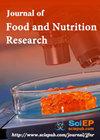Farmers and Consumers Perceptions and Preferences for Yellow Flesh Cassava (YFC) in the Central Region of Ghana
IF 0.6
4区 农林科学
Q4 FOOD SCIENCE & TECHNOLOGY
引用次数: 0
Abstract
Vitamin A deficiency related diseases are a major problem in Sub-Sahara Africa and any staple crop that contains high levels of total carotenoids including β-carotene can be used to combat these challenges. However, there is little or no information on farmers’ and consumers’ perceptions and preferences for yellow flesh cassava varieties that contain high levels of total carotenoids. This study was done to assess the perceptions and preferences of Ghanaian farmers and consumers for yellow flesh cassava varieties. A survey was conducted on cassava farmers and consumers in Abura-Asebu-Kwamankese, Agona East, Asikuma-Odoben-Brakwa, Assin South, and Twifo-Ati-Morkwa, which are the five major cassava-growing districts in the Central region. In all, 600 respondents consisting of 200 farmers and 400 consumers were interviewed using a content validated structured questionnaire. Data were analysed using SPSS version 25 and showed that 91.2% of the consumers and 88.8% of the farmers have heard of the yellow flesh cassava and 72% were willing to cultivate it, but lack of planting materials and non-availability of a ready market were their major constraints. Also, the majority of the farmers and consumers recommended that fufu and gari be made from the yellow flesh cassava. It is recommended that breeders should breed for mealy yellow flesh cassava to meet demand. More sensitization is also needed to increase the patronage for yellow flesh cassava.加纳中部地区农民和消费者对黄肉木薯(YFC)的看法和偏好
与维生素A缺乏症有关的疾病是撒哈拉以南非洲的一个主要问题,任何含有高水平总类胡萝卜素(包括β-胡萝卜素)的主要作物都可用于应对这些挑战。然而,关于农民和消费者对含有高水平总类胡萝卜素的黄瓤木薯品种的看法和偏好的信息很少或根本没有。本研究的目的是评估加纳农民和消费者对黄肉木薯品种的看法和偏好。对中部地区五个主要木薯种植区Abura-Asebu-Kwamankese、Agona East、Asikuma-Odoben-Brakwa、Assin South和Twifo-Ati-Morkwa的木薯农民和消费者进行了调查。总共有600名受访者,包括200名农民和400名消费者,使用内容验证的结构化问卷进行了访谈。使用SPSS 25对数据进行分析,结果显示91.2%的消费者和88.8%的农民听说过黄皮木薯,72%的农民愿意种植黄皮木薯,但缺乏种植材料和没有现成的市场是他们的主要制约因素。此外,大多数农民和消费者建议用木薯的黄色果肉制作富富和gari。建议育种者培育粉状黄肉木薯以满足需求。还需要更多的敏化,以增加对黄肉木薯的青睐。
本文章由计算机程序翻译,如有差异,请以英文原文为准。
求助全文
约1分钟内获得全文
求助全文
来源期刊

Journal of Food and Nutrition Research
农林科学-食品科技
CiteScore
1.60
自引率
9.10%
发文量
0
审稿时长
1 months
期刊介绍:
Journal of Food and Nutrition Research (JFNR) publishes papers focusing on fundamental and applied research in chemistry, physics, microbiology, nutrition aspects, bioactivity, quality, safety, and technology of foods.
 求助内容:
求助内容: 应助结果提醒方式:
应助结果提醒方式:


